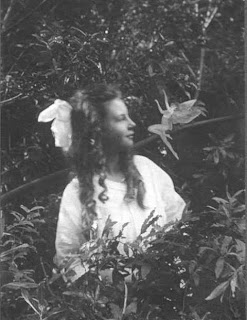 |
| Photo: Marge Ishmael |
Raccoons are featured in many examples of American Indian art and are
considered a symbol of dexterity and the power of disguise. Known as
cunning scavengers, raccoons rely heavily on their front paws. Raccoon
is an Algonquin Indian word meaning "He who scratches with his hands."
A Micmac Tribal Legend
-
A Micmac tribal story of two blind men living by a river reveals a novel theory on the raccoon's markings. The two blind men were provided a wigwam to live in by a tribal member named Kluskap in the tale. Kluskap told the two blind men that they could get water by tying a rope to a tree by the river and then tying the other end of the rope to a bucket that they could then throw into the water. The first blind man who tried this ended up with a bucket of sand when a devious raccoon moved the bucket before he could haul any water in. Later, the same raccoon took two pieces of meat the men were cooking for themselves. These tricks led the men to fight with each other until Kluskap came back and found the raccoon laughing about what he'd done. Kluskap took a coal from the fire and made circles around the racoon's eyes and rings around his tail. The mask he put on the raccoon symbolized his thievery while the rings indicated the amount of times he tricked the men.
Curiosity and Fearlessness
-
Many American Indian tribes also observed how curious and fearless raccoons seemed to be. If raccoons detect a food source they can get by foraging and taking from humans, they will gather in packs and work together to find meals. Different tribes that raccoons lived around would see how these animals would show no fear in seeking easy prey and would risk being seen by humans in order to come away with a bit of sustenance. These qualities gave the animal a reputation for being inquisitive without being afraid.
The Power of Disguise
-
The bandit-style mask marking on the face of the raccoon is seen by some American Indians as a symbol of the masks we wear as humans to blend in with our surroundings. These can be figurative or literal. Tribal rituals and hunting outfits for different tribes would often employ elaborate masks for various symbolic or practical reasons.
Cleverness and Cunning
-
The intelligence of the raccoon was respected by American Indians. The ability of these animals to find so many sources of food and know where to look to seek nourishment has been key to them surviving even amid urban sprawl. Tribes living near populations of raccoons would see how these creatures would measure the risk and reward ratio while trying to locate and acquire food. This would typically involve the raccoon displaying calculated strategies and methods to break into and steal food stores kept in places it might not seem possible for a typical scavenging animal to get to. These qualities also allowed the raccoon to avoid becoming prey itself, which Native Americans could also respect.




















